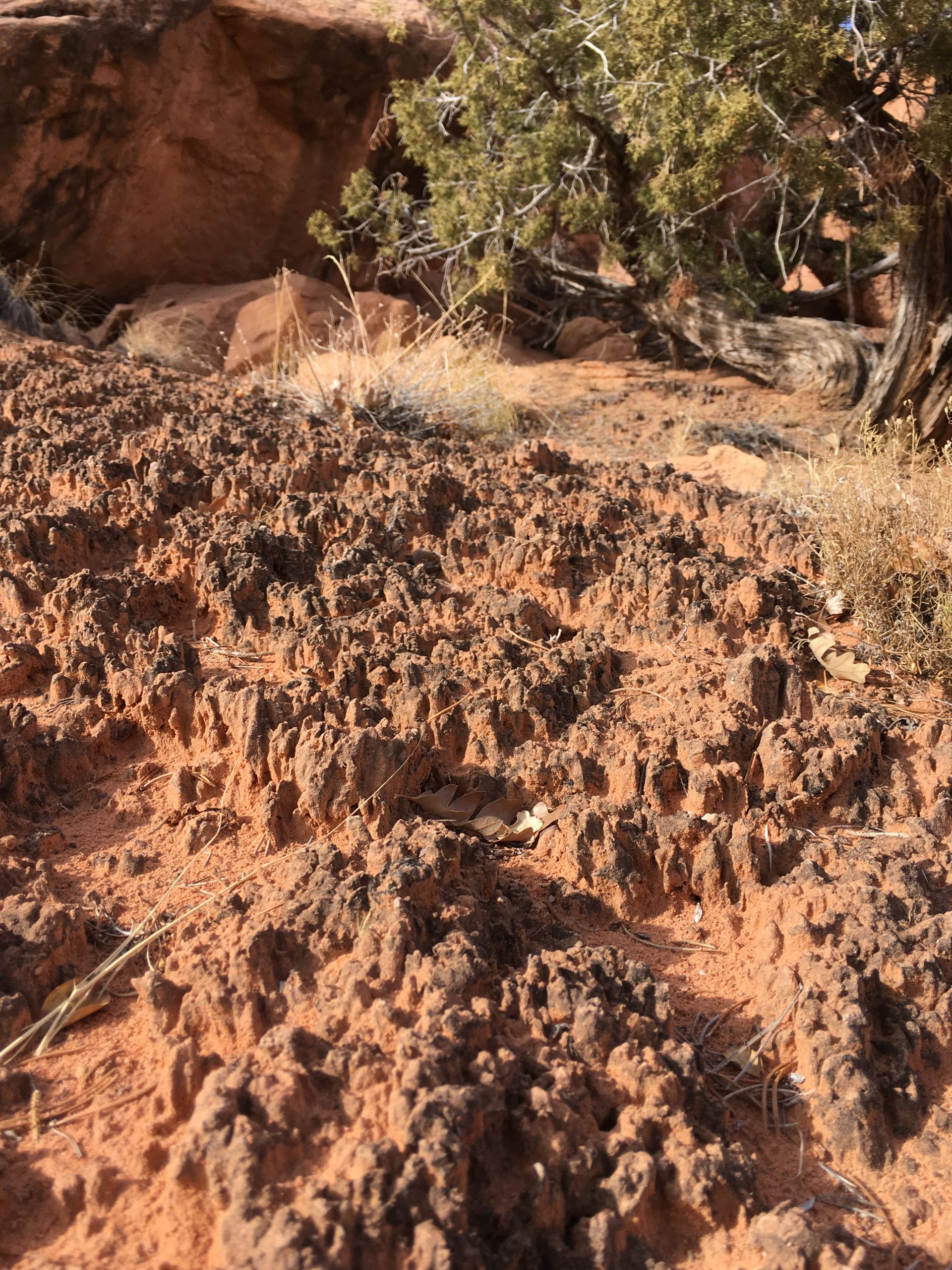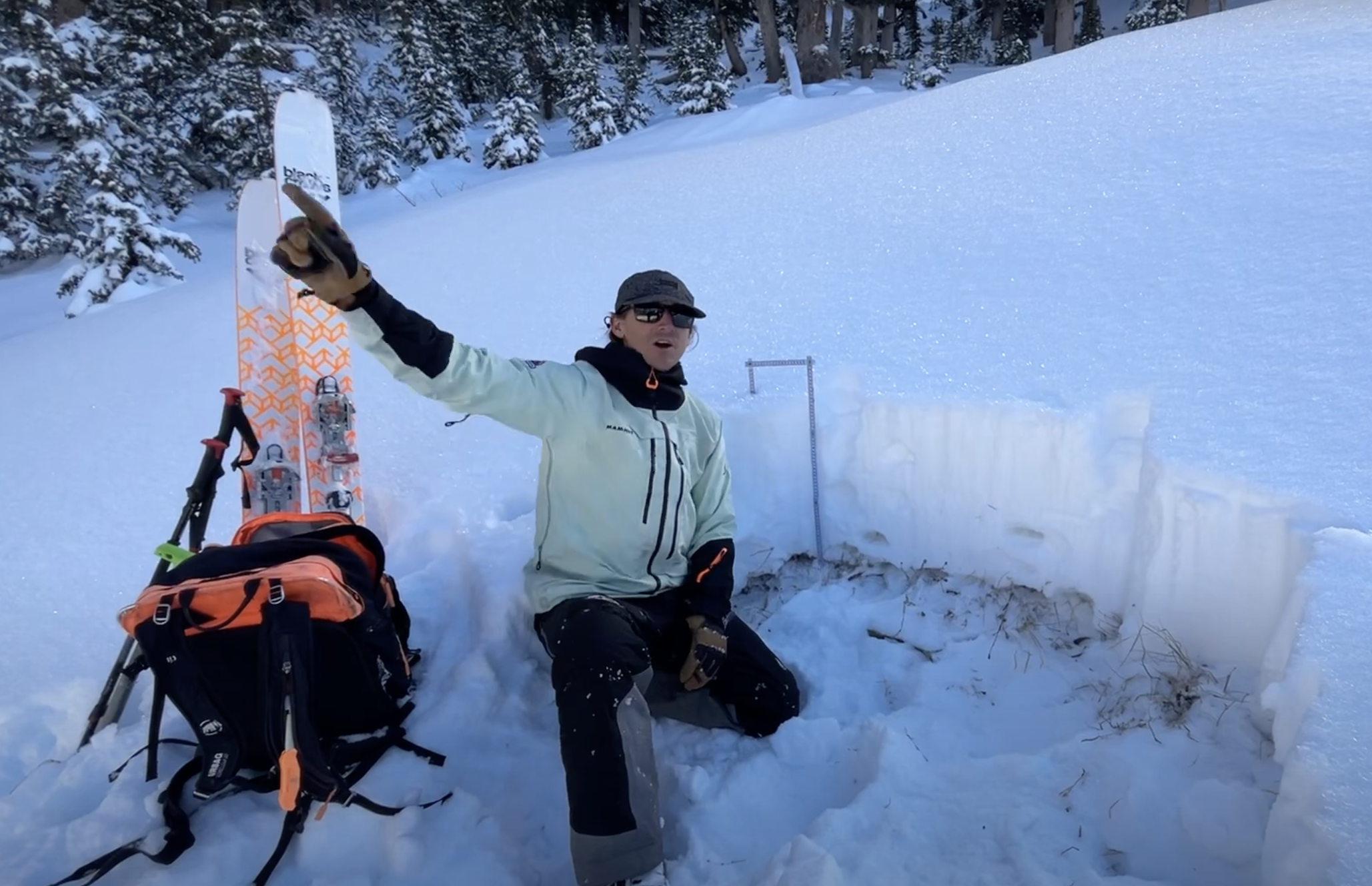Some information may be outdated.
The small, dark, crispy knobs that make up the biological soil crust (or biocrust) that covers the ground of drylands around the world don’t usually strike people as charismatic wildlife, much less as communities that need to be protected. But these fragile ecosystems of moss, lichen, and cyanobacteria often fall victim to the tracks of unknowing hikers and off-road vehicles throughout the desert.
Now, scientists and artists are coming together at the Canyonlands Research Center, located at the Dugout Ranch south of Moab, to set the record straight and inspire folks to defend this delicate dirt. CRC is hosting its first-ever artist-in-residence program with artist Jorge Rojas, who will, over the course of the next few months, curate the latest biocrust research into an interactive and immersive traveling museum exhibit.
The CRC began the program with collaboration in mind, according to the CRC’s program manager Kristen Redd—the center itself is a collaboration with the Redd family, who owned Dugout Ranch before selling the land to The Nature Conservancy in 1997. Through the residency program, artists are invited to work with scientists on climate and land use research, and also to share the research with people of all backgrounds.
Redd said she has big plans for the residency: she hopes that it can serve as a model and be replicated at other conservation sites. The CRC provides a stipend and lodging—a compelling setting in a decades-old ranch among the sheer red rock canyon walls—and requires that the final project engages local communities. The residency is a way to branch out from the CRC’s research and preservation, and for Redd, it’s “in a way… a marketing tool for conservation,” she said.
As the CRC’s first artist-in-residence, Jorge Rojas has been learning about Dr. Sasha Reed, a USGS researcher, and her team’s research on biocrusts while also seeking out Indigenous knowledge and wisdom to help create a fuller picture of biocrusts. A multidisciplinary artist, curator, performer, and educator originally from Morelos, Mexico and now based in Salt Lake City, Rojas “starts with the people” in his work, he said.
For the biocrust project then, Rojas started by imagining who would walk through the experience he’s creating, “and what might be the glue that connects the narrative,” he said.
He’s aiming to make the research accessible and engaging to all audiences: young, old, amateur, expert, visitor, local. Whether that’s zooming out with a look at the global climate impact of biocrusts, zooming in to the microscopic texture, listening to the sounds it makes, feeling simulated crust, or most likely all of these and more, the exhibit will be “like a journey,” he said.
By engaging multiple senses, a visitor could experience the tiny organisms in a visceral way without disturbing them in their natural setting. Rojas dreams of the piece having its own life beyond museums, potentially being re-created in schools, conferences, and maybe inspiring lesson plans. Since starting the residency, he’s gone from looking up at canyon walls to looking down at the communities by his feet.
“When people think about sustainability, people usually think about the Amazon, or glaciers,” he said. “But [biocrust] is the living skin of the Earth.”
Despite their small stature, biocrusts play crucial roles in their ecosystems by slowing erosion, providing shelter for other creatures, and possibly—new research shows—capturing massive amounts of carbon from the atmosphere.
According to Reed, the carbon dioxide absorbed by drylands has long been assumed to be the work of plants, but biocrusts may actually deserve a lot of the credit. Even though they occupy about 45% of the Earth’s land surface and have 12% of the Earth’s biomass, drylands have largely been ignored in research due to long-standing perceptions of deserts as lifeless wastelands. The intensive study of biocrusts is a relatively recent undertaking, Reed said.
She’s enjoyed looking at her research through an artistic lens in working with Rojas, she said.
“Art and science are two sides of the same coin,” Reed said. “Both are about communicating things about the world to each other.”
The whole team hopes to inspire a love and fascination for biocrusts and all the life they support.
“Our future requires creative solutions to climate change,” Redd said, and she hopes this project could lead to one of them.
The art and science experience will be on display at the Utah Museum of Contemporary Art (UMOCA) in Salt Lake City from January to June 2024.
Correction: Dugout Ranch is owned solely by the Nature Conservancy.
Appreciate the coverage? Help keep local news alive.
Chip in to support the Moab Sun News.





